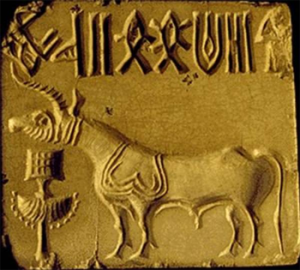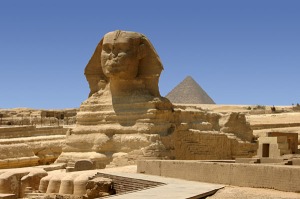Rudolf Walter Richard Hess was a prominent politician in Nazi Germany during World War II. He was the Deputy Fuhrer to Adolf Hitler and the third most powerful man in Nazi Germany. But his name is associated with a range of mysteries that may have had a bearing on the outcome of World War II.

Rudolf Hess Third Most Powerful Man in Nazi Germany
Why did he Fly to Scotland?
Rudolf Hess became a talking point during the war for his flight to Scotland to negotiate with a high standing British official on behalf of the Nazi government. Researchers believe that he flew solo to the Scottish island and was taken in as a Special Prisoner of War. Over the years many theories have been sculpted. Some believe that Hess was a prey to one of the outrages of Hitler and flew away to save his life. Others believe that Hess wanted to position himself above Herman Goring (second most powerful man in Nazi Germany) and thus took an initiative to seek truce with United Kingdom, thus tilting the war towards Germany. But the truth of the story is quite different from all these assumptions.

Hess was close to Hitler, seen here beside Hitler during a March
It is clear from some documents released recently by the British Intelligence that Hess did not escape from Germany, he rather cam with the blessings of Hitler to seek peace with UK. The arrival of Hess in Scotland was anticipated by the British Intelligence officials. Now let us take a look at the situation which led Hitler to order Hess into undertaking such a mission. By the early days of 1941 it was clear to Hitler that he had committed a tactical fallacy and the holy war against Russia was eminent. Hitler had also failed to knock off the challenges of Western powers before moving East. The presence of UK held back Hitler’s advance. He could not utilize maximum military strength in the Russian expedition unless his own backyard was safe. This is why Hitler was looking for a peace treaty between Nazi Germany and United Kingdom. He started giving out hints to not the British government directly but a group of influential British people represented by the Duke of Hamilton. The name of the group was Anglo-German Fellowship Association, which had been disbanded following the war. A delegate was selected to represent Nazi Germany in the form of Ernst Wilhelm Bohle. He was a British subject and aware of the British customs. Hitler also carefully leaked the desire for peace talks with UK in Poland (on neutral grounds) to some foreign journalists. News was published in many Turkish and South American newspapers. The intention of this leak was to reach out to the British government and observe their reactions. But neither the British government nor the press picked up the story. This made Hitler wonder.

Rudolf Hess in a Fighter Plane
He grew restless, as the peace treaty was the need of the hour for him. He felt that Bohle was not the ideal candidate for the job; someone else with a bigger stature could impress the British government and earn the truce for him. When he looked around Hess was the perfect candidate, he had grown up in English quarters of Alexandria and understood the British mind. As Hitler was desperate so he also compromised the location and now Hess would visit England for the talks. The proposal was sent to Duke of Hamilton. The reply was delayed but there was affirmative word heard from the other end. There was four months of negotiations between the two parties and finally on May 10, 1941 Rudolf flew into twilight to visit the Duke in Scotland.
Hess did not know that this was all a part of an elaborate set up by the British Intelligence. They had confiscated all the letters and replied on behalf of the Duke. The Duke knew nothing about these proposals. It was just a part of British masterminds to capture the Number Three of Nazi Germany.

Wreckage of Hess Plane in Scotland
The Aftermath
There is also a theory that Hess flew alone, this is not true. Hess left the German base accompanied by a couple of fighter planes. They accompanied all the way to the British Isles. The coast guards caught three unusual blips on their radar screen. The planes were asked to identify themselves. When no answer came, the issue was sent to RAF Headquarters, the coast guards were asked to let the planes enter into British air space. Only after they had reached inland into Scotland were orders given asking to bring them down. It was ensured that Hess’ fighter plane, though broken landed safely. For the two other flights nothing is known of their fate. When diving down using a parachute Hess broke his leg. He was sent to a local healthcare center from where the British administration arrested him. At the point of arrest Hess asked the government to send him back to Germany as he was a messenger. But the government opined that Hess had not come to visit the government directly, rather he had come to meet one of the wards. So, he was arrested as a Special Prisoner of War.

Rudolf Hess during Nuremberg Trials alongside other War Criminals
Though the role of British Intelligence has been understated in this incident, but they were able to out beat the Nazi Germany.
After the War

Aged Joseph Hess in Spandau Prison
During the war Hess stayed in various prisons and finally when the war ended he was sent to Germany to stand in the Nuremberg Trials alongside other major war criminals. He was found guilty on four counts and sentenced to life imprisonment. He was sent to Spandau Prison to spend his time.
Mystery Regarding Hess’ Death

Hess died by committing suicide on August 17, 1987
Rudolf Hess died in Spandau Prison on August 17, 1987 at the age of 93. The reason of death was suicide. The jail authorities later revealed that Hess had hung himself with an electrical cord within the jail premises. His son, Wolf Rudiger Hess and many others believe that Hess was murdered. Wolf believes that his father had sensitive information regarding British misconduct during World War II. If such information was revealed it could completely change the concepts and beliefs. To stop Hess, he was murdered by Intelligence agents. To add fuel to the matter, Abdallah Melaouhi Hess’ medical orderly for five years was dismissed from his position for publishing a book that claimed Hess was too strong mentally to commit suicide. However, the following investigations did not find any evidence of murder. Spandau Prison was demolished after the death of Hess to stop it from becoming a place of pilgrimage of Nazi followers.
This slideshow requires JavaScript.













































